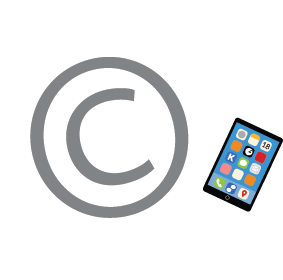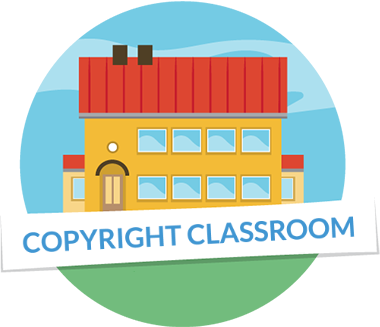Book trailer project
Prepared by: Marjukka Peltonen, adapted and edited by ICLA.
A book trailer is a way to tell others about a book, share your reading experience, and entice others to read the book. Book trailers can be made in many different ways. Common to all trailers is that they are short and multimedia: a combination of video and image, text and/or music, and a voiceover.
A book trailer is not a book review. Nor is it a summary of the book’s plot, but rather it provides a glimpse into the book—something exciting about the events, locations, and main characters. A book trailer also reveals much about the reader and their experience with the book.
This book-trailer project ties into the NCCA’s Senior Cycle Key Skills: information processing, communicating, being personally effective, working with others, and critical and creative thinking (see below). Specifically, it supports multiliteracy, information and communication technology skills, visual and linguistic production and the use and interpretation of different texts. To expand the project’s educational value, it can be conducted as a collaboration between different subjects. During the project, the groups taking part can visit and collaborate with a library.
The project also involves learning about copyright and how this applies to the book(s) being focused on, the works used (music, video, images, quotations) and to the students’ own productions.
You can download this guide for the book trailer project as a PDF here.
Time: 4–6 lessons.
Learning objectives:
- Inspire and encourage: Inspire and encourage students to get to know different types of literature and literary genres and to share reading experiences with others in a multimedia environment.
- Language and imagination development: Motivate students to develop their language and imagination by expressing themselves through visual and linguistic means.
- Information production and presentation: Encourage students to use a variety of methods to produce and present information and ideas.
- Narrative and descriptive writing: Guide students in producing narrative, descriptive, and other texts using various tools in a multimedia environment.
- Understanding copyright: Teach students to understand and respect copyright.
- Tool and application usage: Teach students to use different tools and applications and develop skills in interaction with others and collaborative work.
- Key skills: Information processing and critical thinking from reading, understanding and responding to the book; communicating ideas through descriptive writing and visual elements; an opportunity to test personal effectiveness; working with others by developing the trailer in a group and potentially across subject areas.
Project implementation
Preliminary work – step 1: Before the project starts, reading circles should be organised where the students can consider a choice of books. Each reading circle can be the basis of a group working together to produce a book trailer.
Preliminary work – step 2: Each group should agree on a book that all in the group feel able to be enthusiastic about and that will also give them plenty to say that is interesting and original. It is good to choose a book that is not too familiar (unlike the examples below that have been chosen with the expectation that nearly all students will be familiar with them) and for which the students do not already have a visual image – so avoid books that have been made into recent or classic films. All students should then read/re-read the chosen book considering how it could be featured in a trailer.
Lesson plan for the book trailer project
Lesson 1: Introduction to the book trailer concept and planning
Objective: Present the idea of a book trailer.
Activities:
- Explain what a book trailer is and its purpose.
- Show examples of completed book trailers.
- Discuss the key elements of a book trailer (video, image, text, music, narration, duration).
- Develop the storyboard that will identify what these elements are.
Lesson 2: Image search and copyright discussion
Objective: Teach students how to find and use images legally.
Activities:
- Guide students in searching for relevant images that can be used legally.
- Educate students on copyright best practices for using images.
- Discuss the use of Creative Commons-licensed images and how to attribute them correctly.
Lesson 3: Text workshop
Objective: Develop the script and text components for the book trailer.
Activities:
- Workshop on writing compelling and concise scripts.
- Focus on key scenes, characters, and the overall mood of the book.
- Ensure direct quotes from the book are clearly indicated and acknowledged.
Lesson 4: Assembling the book trailer
Objective: Compile the components of the book trailer.
Activities:
- Combine images, text, and video clips.
- Start editing the trailer using multimedia tools.
- Ensure that all components align with the storyboard and script.
Lesson 5: Music and final touches
Objective: Add music and finalise the trailer.
Activities:
- Search for or create background music and educate students on copyright best practices for using music.
- Add music and adjust the timing of images and text.
- Fine-tune the trailer, ensuring smooth transitions and coherence.
Lesson 6: Book trailer premiere
Objective: Present and review the completed book trailers.
Activities:
- Discuss the learning outcomes and the process of creating the trailer.
- Each group presents their book trailer to the class.
- Conduct a peer review session with constructive feedback.
Book trailers and copyright
Respecting copyright:
- Direct quotes: Ensure direct quotes from the book are clearly indicated.
- Images and music:
- If the trailer is to be shared beyond the school/college, use only images and music created by the students themselves or those with a Creative Commons licence or similar. (For use solely within the class, the copyright exception for education applies.)
- Obtain necessary permissions if using third-party images or music and planning to share the trailers more widely.
- Permissions: All creators (students) give permission for their images and music to be used.
- Publication consent: All creators agree to the publication of the book trailer to the class, school/college and/or more widely and are satisfied with the final result.
Resources:
- Checklist: Print a checklist for school/college projects or video projects.
- Games and resources: Use the games and resources available on the Copyright Classroom website for information about copyright and the use of copyright works.
1. Creating a storyboard
The first step in creating any audiovisual work is to develop a storyboard. This is an overall plan that includes where text and audiovisual elements will go in relation to each other and how many images, pieces of text and video clips will be needed.
Students should remember to keep in mind how long their book trailer should be. Generally, to be effective a book trailer will be between 30 and 90 seconds.
2. Illustrations for the Book Trailer
If the book trailer is to be shared only within the class or school/college, it can be illustrated with images from the internet and scanned from books, magazines and other publications under the school/college’s ICLA copying licence.
If the students want to share their trailer online outside of school/college, any illustrations used should be chosen by finding free-to-use images online or created specially by students taking their own photographs, though these can be challenging owing to seasons and location. Searching for images and checking copyright permissions is also an excellent exercise in information gathering and understanding copyright.
If the book trailer is published online make sure:
- the images used in the trailer are created by the students themselves or have a Creative Commons or similar open licence.
- illustrations from the book are not used in the trailer without permission from the publisher/illustrator and acknowledgement of their creator.
- to use the correct cover.
NB: Remember that there should not be only images in a book trailer. Some things will be difficult to find images for, so the students can describe those with text instead. Background music can significantly change the mood of an image.

Tips for finding ideas for illustrations – suggest students do the following:
- Make a list of characters, places, and various objects from the book. What words would they use to describe the atmosphere in the book?
- Change the characters and places on the list into search terms. Do not search by name, but find a word that describes the person or place. For example, Professor Dumbledore – ‘old man, beard, wizard’; Hogwarts – ‘old castle’.
- Refine or expand the search terms based on how the search went. For example, old car – a specific car brand; exotic birds – ‘parrot, ostrich’.
- Choose about ten words from the word list that they would like to include as images in their trailer. It is good to come up with a few extra image ideas since they probably will not find all the images they want.
- Example of an image list for Harry Potter and the Philosopher’s Stone: broomstick, magic wand, old castle beside lake, ancient trees in a forest, large mirror with elaborate frame, pumpkins, mediaeval chess pieces, snowy owl, steam train, rail tracks running through mountains.
Image sources and referencing
Instead of searching with a search engine (Google or similar), it is a good and safe solution to search for images in online services where the user conditions for each image are clearly stated in one place. Canva, Flickr, Pexels, Pixabay and Unsplash are examples of image libraries that have free-to-use stock photos and images.
For each image, save the source information. You can either:
a) Copy the image’s full address and save it, or
b) Take a screenshot of the image so that the creator’s information is clearly visible.
Copying the exact web address of the image is the only permitted method when using a search engine’s image search to find images. In image services like Pixabay, the images can be freely used, and in the book trailer, it is sufficient to provide the image service’s address as the source information. If the image has been shared with a CC licence (Creative Commons), the version used must always be stated with the image. For example, Image: Author’s name, source, CC-BY.
3. Text for the book trailer
The purpose of combining images and text in a book trailer is to create an interesting presentation that will convey the flavour of the book in just 30-90 seconds and encourage viewers to read on.

Tips for writing text for a book trailer – share these ideas with your students
Method 1. Story in five sentences
The intention of the book trailer is to engage would-be readers and encourage them to read on and find out more – the challenge is not to reveal too much. Try in five sentences to sum up the book’s starting point and premise, who the key characters are and what challenges they will face.
To convey these overall features, consider choosing an interesting or exciting incident from the book. Write a story in five sentences about it
Here is one way to do that:
In the first sentence, describe an important scene and the mood.
In the second sentence, introduce the main character/one of the book’s characters. Start the sentence with the character’s name and describe what they are doing.
In the third sentence, describe something crucial or important that happens to change the mood or course of events.
In the fourth sentence, describe the scene again and explain how the mood has changed.
In the fifth sentence, describe the main character’s reactions or what they are doing in the situation.
It’s good if what is happening in your story does not get a resolution.
As an example, a text suggestion for a book trailer about JK Rowling’s Harry Potter and the Philosopher’s Stone:
The Forbidden Forest is normally off limits to students because of its hidden dangers and now something evil in the Forest is killing unicorns. Harry Potter and his classmates have been sent into the Forest to look for the culprit as a punishment. Suddenly up ahead Harry sees a hooded figure crouching over a dead unicorn. The figure looks up and the cursed scar on Harry’s forehead burns – a sign he is under threat from Dark Magic. The hooded figure starts to come towards him; before he can turn and run he trips over a tree root and falls backwards.
Method 2. Leftover words
After searching for images, there may be words left on the list that you did not find any images for. Create five sentences using those words. Even single words work well as text for the trailer.
4. Putting the trailer together
After the students have searched for images and created the text they want to include, it is time to compile the material into a trailer according to the plan made using the storyboard. In compiling their book trailers, the students get the opportunity to plan and create a simple video story. Choose an application for them to use with versatile tools for creating text boxes for editing.

Tips for Applications:
For iOS devices: iMovie is often familiar from before. Choose film as the base and not the application’s own trailer template. Splice is a good alternative because creating text boxes works well.
On a PC, it is worth trying Adobe’s web-based editing program Spark. Spark requires login with an Adobe username.
For Android devices: FilmoraGo, VideoShow.
The book trailer’s final image
The title of the book should be revealed only in the last image of the trailer. The students should include that in their storyboard. They can use an image of the cover from the publisher’s website or from an online bookseller under the copyright exception for criticism and review.
End credits
The end credits should include information about the creators and sources for all images and music used in the trailer together with the author and publisher of the book and the names of those who made the book trailer.
5. Music for the trailer
In choosing appropriate music, students need to consider what the mood of the book is. Is it fast-paced, sad, exciting, eerie, or cozy? It may be helpful to make a list of words that describe the book’s mood before searching for or creating music. With music, the mood of the trailer and the images selected can be completely changed.
If the book trailer is to be shared solely within the school/college, the copyright exception for education allows the use of musical recordings for educational purposes and the students can choose freely what works best for their book trailer. If the trailer is to be published online, the students will need to create the music themselves or select royalty-free music. In addition, some of the largest music distributors have agreements with YouTube for their full repertoire to be used to accompany user-generated videos.
5. Premiere and publishing
Premiere
When everything is ready, remind the students once again to respect the work of others and give constructive feedback to their classmates. Every work deserves applause for the effort put into creating it. After each book trailer, it is worth asking if the trailer sparked the audience’s interest in reading more – this is a test of ‘personal effectiveness’, one of the Key Skills.
Publishing
If you want to publish the book trailers online, beyond the school/college’s closed network, agree on this with everyone involved in making the trailer and ensure that all the necessary permissions (images, music, and creators) for online publication have been obtained. Note that the school/college’s ICLA copying licence does not allow for online publication and the same is true for audiovisual material and music used under the copyright exception for education.
Permission from guardians is always required to publish the work of any students under 18 online.
